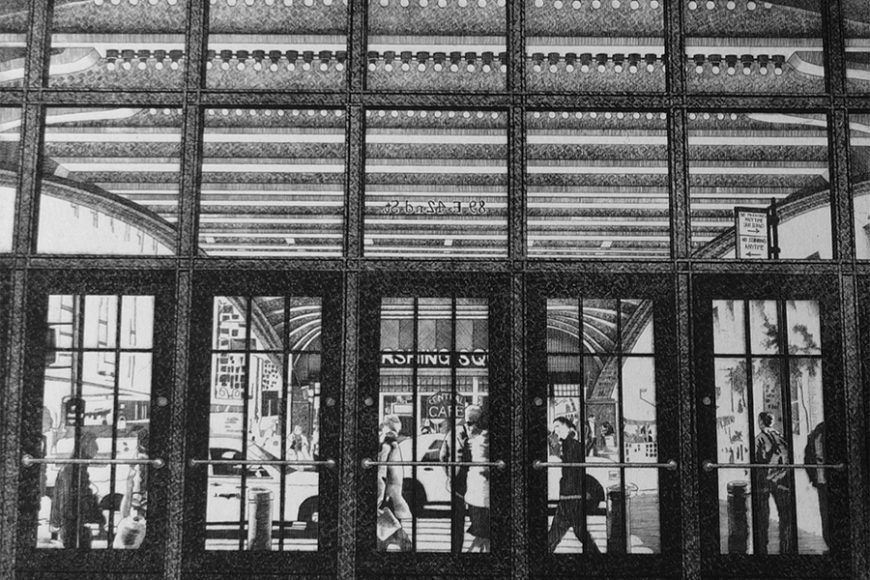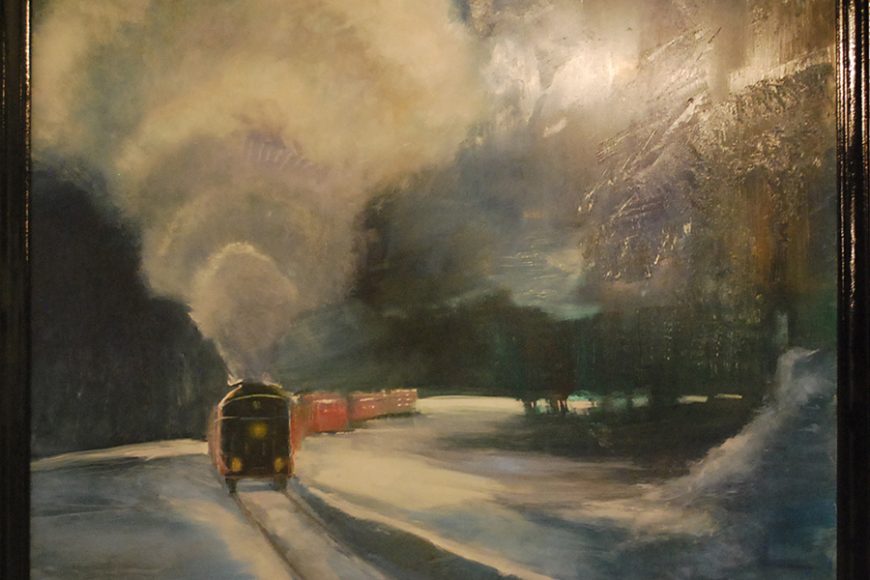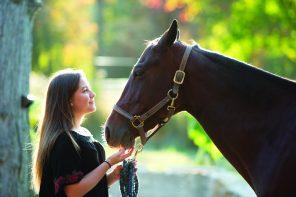Hurry up! We have to catch the train.
When it comes to travel, time is often of the essence.
These days at Lockwood-Mathews Mansion Museum, though, you can take your time as you stroll through “The Trained Eye: The Art of Railroads & Stations.”
The Norwalk exhibition devoted to art inspired by trains and travel by rail features some 30 works created by nearly a dozen contemporary regional artists.
The show, which continues through Jan. 5, explores its subject matter — a favorite of artists of the 19th and early 20th century ranging from Claude Monet to Edward Hopper to Camille Pissarro — from varied approaches and features paintings, photography and etchings.
It all came together in a way that assured its curators — artist and museum trustee Gail Ingis and trustee Julyen Norman — that it was a more than worthy subject.
We walk through the exhibition on a recent morning with Ingis, a guide so enthusiastic that she not only offers us a running commentary but also provides additional comments in writing.
The show was conceptualized by Susan Gilgore, the museum’s executive director, and designed to tap into several themes, as Ingis says, both tied to the mansion — built in the 1860s for LeGrand Lockwood — and beyond.
“LeGrand Lockwood was a railroad magnate and financier and as this year marks the 150th anniversary of the first Transcontinental Railroad, we decided to highlight artists that are inspired by railroads and stations,” Ingis says.
And, she adds, “I know that trains are a hobby that everyone loves. This show was (designed) to entertain our viewers with the beauty of paintings and photography but also make them think of how railroads may impact their own lives.”
The methods vary, Ingis says.
“Photographers are more likely to shoot trains in motion, trains in a station, historic trains and stations, as you can see here in our show.”
For painters, though, “ It’s a bit unusual for artists who paint to do plein air painting of a train, or even a train station. They might take a picture of something that fascinated them and paint in the studio.”
There are works in oil by Catherine Russell, moody scenes that capture the steam of old-time locomotives, while Norm Siegel’s work “New Lots Local, 1972,” an oil on canvas, brings you right back to old-school subway travel, graffiti and all.
There’s a captivating quality to the works of Bertram Lewis.
As Ingis says, “His work has an abstract feel to it. It’s not really defined. It’s loose.”
From “Homeless” to “Looking up at Grand Central” to “Schlepper,” one can imagine being — maybe even just yesterday — in these urban scenes.
“They tell a story,” Ingis says. “The paintings tell a story.”
Sometimes, though, the story is a bit mysterious.
Photographer David Bravo of Fairfield, who has worked with WAG, is featured, as well.
His images are at times thoughtful and thought-provoking, such as the black-and-white “Pilgrimage.” Ingis is intrigued by the group of Quakers on a railway platform.
“I thought where are they going, what are they doing?”
She is equally entranced by Bravo’s colorful “Railway Bridge,” a scenic shot so rich it looks like a painting.
“As an artist, you want to show depth. You want to show color. You want to show division of the space,” which, she says, Bravo does in this evocatively sweeping scene.
Etchings by DeAnn L. Prosia are more intricate works that reveal themselves on closer inspection.
“It really is phenomenal. Look at the detail,” Ingis says of works that include “5 Pointz,” “Under the Elevated” and “Entrance to the City,” the landmark Pershing Square marquee clearly in view.
Photographer Aleksander Rotner’s work features the vivid “All Aboard,” a photograph on metal, as well as “Into The Past,” an image that melds historic and contemporary Norwalk. Ingis credits Rotner’s “sense of space, value and execution,” along with his knowledge of history.
As we hit the midpoint of the show, Ingis points to a work by David Dunlop, with whom she has painted. Ingis says he was among those she first reached out to about the show.
“That started the ball rolling.”
So it’s fitting that Dunlop’s work with his son, Max Dunlop, is here.
“Riding the #7,” an oil on aluminum, is a large-scale and bold take on urban transport filled with a vivid sense of movement.
As Ingis says, “It’s taking you somewhere. It’s speeding.”
Julie O’Connor’s “Cannondale, Connecticut, You can still take the train from here” is more meditative, a sharply detailed image featuring the old-fashioned looking local station, historic yet still in use. It’s set against her images from Beijing, which feature the same Arts District station scene captured during the day and night.
Of the submissions, Ingis says the selection process was pointed.
“I did choose the ones that worked well,” she says. “One surprised me and that was Rob Zuckerman. Not one train is in his work here, but the representation of trains is apparent in his choice of images.”
The photographer has a whole wall featuring his six detailed shots that hone in on elements of train travel, from “Penn RR Dining Car Flatware & China” to the simple-yet-telling “Rail Road Station Bench,” a circa-1900 bench that remains in the Southport train station.
“His work added another dimension to the show,” Ingis says. “Don’t you agree?”
With each artist, works by Kara LaFrance and Anthony Santomauro round out the show, a different perspective shines.
“All art is meant to evoke memories, fond feelings, an exceptional adventure, maybe even a romance.” Ingis says.
What she wants visitors to take away from this exhibition, Ingis had told us at the start of our tour is, “History and when we walk through, we’ll see it.”
By the time we end our journey “by rail,” we most certainly have.
“The Trained Eye: The Art of Railroads & Stations” continues through Jan. 5, as does “Toys, Trains and Magnificent Trees: Illuminating Christmas at the Mansion,” at Lockwood-Mathews Mansion Museum, at 295 West Ave. in Norwalk. For more, visit lockwoodmathewsmansion.com.






